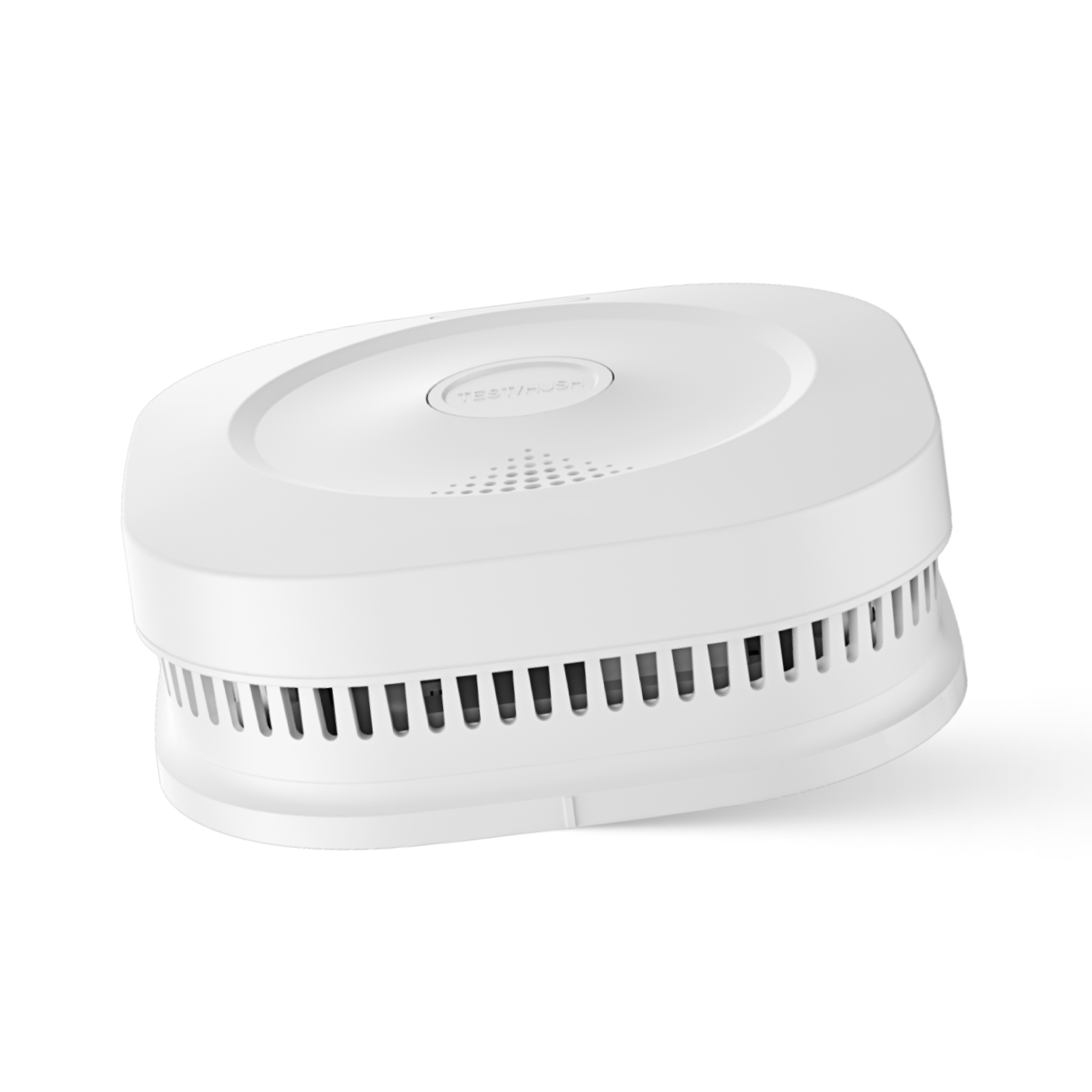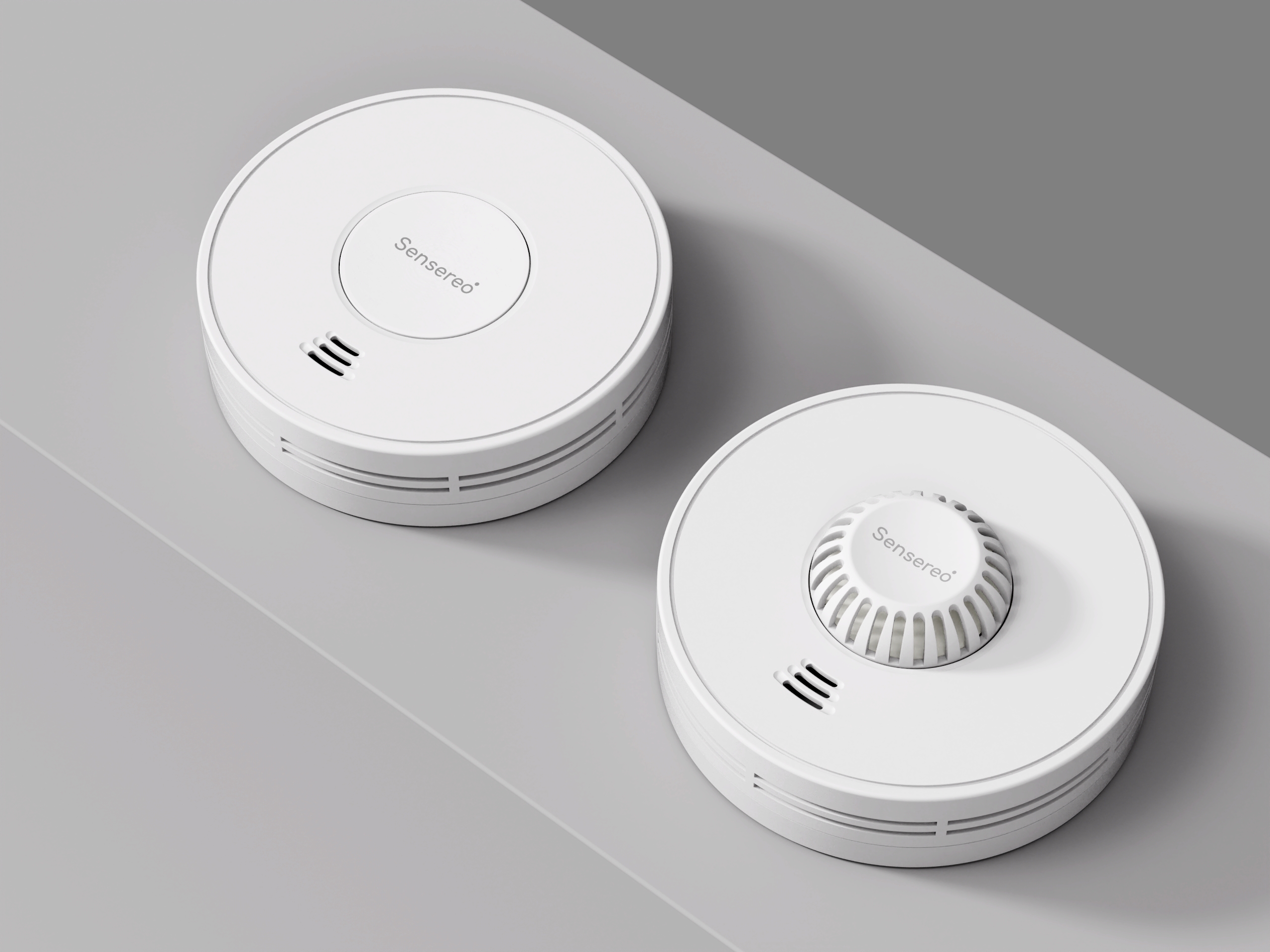The sound of the smoke alarm is a warning that no one ever wants to hear, yet it is a sound that could save your life. When a fire breaks out, every second counts, and the type of smoke alarm system you have can make a critical difference in how quickly you and your family can react. The debate between interconnected smoke alarms and traditional standalone units is one of the most important decisions a homeowner will make regarding their family’s safety.
While a standalone smoke alarm operates as an independent sentinel, sounding only in the room where it detects smoke, an interconnected smoke alarm creates a unified safety network. If a fire starts in the basement and one alarm is triggered, all alarms throughout the entire house will sound in unison. This whole-home alert, often powered by advanced RF smoke alarms technology, ensures that everyone gets the crucial early warning they need to escape, regardless of where they are in the home. It is a fundamental shift from individual room protection to a comprehensive, integrated safety system.
Understanding the Standalone Smoke Alarm
For decades, the standalone smoke alarm has been the standard for home fire safety. These are standalone gadgets that are usually battery-operated and placed in strategic areas such as living rooms, hallways, and bedrooms. When the internal sensor detects smoke, its siren activates, and that’s it—the alarm is a localized event.
Based on their detection technology, standalone alarms can be divided into two main categories:
- Ionization Smoke Alarms: These contain a small amount of a radioactive element to ionize the air between two electrodes. Smoke disrupts this current, triggering the alarm. They are generally more effective at detecting fast-flaming fires.
- Photoelectric Smoke Alarms: These use a beam of light inside a chamber. When smoke enters the chamber, it scatters the light, which is then detected by a sensor, activating the alarm. They are typically better at detecting slow, smoldering fires that produce a lot of smoke.
While these alarms are affordable and simple to install, their most significant drawback is their isolation. In a larger home or a multi-story building, an alarm on the first floor may not be loud enough to wake a sleeping child on the second floor or alert someone in a basement office. This delay in warning can be fatal.

The Power of Interconnected Smoke Alarms
The interconnected system, a far more reliable and complete solution for home fire safety, is the result of technological advancements. The fundamental idea is straightforward but life-saving: all alarms exchange information with one another. There are two main ways to accomplish this communication:
- Hardwired Interconnected Alarms: These systems are wired directly into a home’s electrical system. This gives each unit a hard link and a steady supply of power. Installing this configuration in an existing home can be costly and complicated because it necessitates running new electrical wiring, even though it is incredibly dependable and frequently required for new construction.
- Wireless Interconnected Alarms (RF Smoke Alarms): This is the modern, more popular solution for retrofitting existing homes. RF smoke alarmsuse radio frequency signals to create a wireless network among all the alarms. When one unit detects smoke, it broadcasts a signal to the others, and they all sound together. This technology eliminates the need for wiring, making installation as simple as a standalone unit, with the immense added benefit of a synchronized alert.
A key feature of many interconnected smoke alarm systems is their ability to identify the origin of the alarm. When the whole system is blaring, a quick look at the central panel or a check on a mobile app can tell you which specific unit triggered the alert, helping you pinpoint the fire’s location and plan your escape more effectively.

The Role of the Standalone Carbon Monoxide Detector
Fire isn’t the only threat that requires a home safety alarm. Carbon monoxide (CO) is an odorless, colorless, and tasteless gas that can be lethal. It’s often produced by faulty furnaces, water heaters, and fireplaces. Because CO is undetectable by our senses, a dedicated alarm is essential. A standalone carbon monoxide detector is a separate device that monitors for this gas, sounding a unique alarm when dangerous levels are detected.
Many contemporary interconnected systems now combine CO and smoke detection into one unit for the highest level of protection. By offering a seamless safety net against both fire and carbon monoxide hazards, these combination detectors can be a useful addition. However, for homes with older systems or as an extra layer of defense, having a separate standalone carbon monoxide detector is a non-negotiable safety measure. It’s crucial to place these detectors correctly—near sleeping areas and on every level of the home—to ensure maximum effectiveness.
The Crucial Differences
The comparison isn’t just about how the alarms are wired; it’s about a fundamental difference in safety philosophy.
Safety and Early Warning
Your safety is limited when you use a standalone alarm. Before an alarm is set off on the opposite side of the house, a fire that starts in a distant corner of the house may smolder for several minutes. The biggest risk is this delay. An interconnected smoke alarm system would sound a loud, immediate alarm throughout the house in the event of a fire, giving everyone vital extra time to get up, gather with family, and safely evacuate. For the elderly, small children, or people with hearing impairments, this is especially important.
Installation and Maintenance
The best example of an easy installation is a standalone alarm. After mounting them, you check the battery. Interconnected systems are almost as easy, particularly RF smoke alarms. Modern models typically have longer battery lives, and pairing the units is simple. Even though they are dependable, hardwired systems are much more involved and need to be installed by professionals. All alarms, no matter what kind, need to have their batteries changed every year and tested every month. After ten years, they must be completely replaced.
Cost and Long-Term Value
Purchasing multiple separate units is definitely less expensive than the initial cost of an interconnected system. This is a classic example of short-term cost versus long-term value, though. The investment in an interconnected system is invaluable due to the increased safety, peace of mind, and ability to comply with contemporary building codes. Because of their superior safety benefits, interconnected alarms are now required for new construction by many building codes.
The sum up
| Feature | Interconnected Smoke Alarms | Standalone Smoke Alarms |
| How it Works | Units are linked, if one sounds, they all sound. | Units are independent; only the triggered alarm sounds. |
| Safety Level | Higher. Provides a whole-home, early warning system. | Lower. Only alerts those near the source of the fire. |
| Installation | Simple wireless (RF) setup or hardwired. | Very simple; just mount the unit. |
| Cost | Higher initial cost for the system. | Lower cost per unit. |
The Verdict: Choosing Your Path to Safety
When you weigh the benefits, the choice becomes clear. While a basic standalone alarm is better than nothing, it offers a level of protection that has become outdated. For true peace of mind and comprehensive safety, especially in larger or multi-story homes, an interconnected smoke alarm system is the undisputed gold standard.
Imagine the scenario: a fire starts in your kitchen late at night. With standalone alarms, the unit in the kitchen sounds, but the sound may be muffled by closed doors as it travels down the hallway and up the stairs. You might not wake up until the fire has already grown significantly. Now, picture that same scenario with an interconnected smoke alarm system. The moment smoke is detected, every single alarm—in every bedroom, in the hallway, in the basement—screams into action simultaneously. The jarring, unmistakable sound ensures you and your loved ones are awake and alert, with precious time to implement your escape plan. This is the power of a unified system.
Ultimately, home safety is not a place to cut corners. Investing in a high-quality, interconnected system is an investment in your family’s future. For more expert advice, details on specific products, and to find the perfect safety solution for your home, visit our selection of interconnected smoke alarms and carbon monoxide detectors today.
FAQs
Q: Are RF smoke alarms reliable?
A: Yes. Modern RF smoke alarms are highly reliable and are tested to meet rigorous safety standards. They use secure radio frequencies to ensure consistent communication between units.
Q: How do you install interconnected smoke alarms?
A: Wireless RF smoke alarms are typically easy to install. You mount each unit in the required location and then follow the manufacturer’s instructions to pair them together into a single network, usually with a simple button press.
Q: Can I mix interconnected and standalone alarms?
A: It is generally not recommended to mix them. To get the full benefit of an interconnected system, all alarms in the home should be part of that network. Standalone alarms will not communicate with the interconnected system.
Q: Should I also have a standalone carbon monoxide detector?
A: Yes, it is highly recommended. Many interconnected systems include CO detection, but if yours doesn’t, or if you want an extra layer of protection, a standalone unit is a vital addition.
Q: What is the lifespan of an interconnected smoke alarm?
A: Most smoke and carbon monoxide alarms, both standalone and interconnected, have a lifespan of about 10 years before they need to be replaced. Always check the manufacturer’s recommendations.




